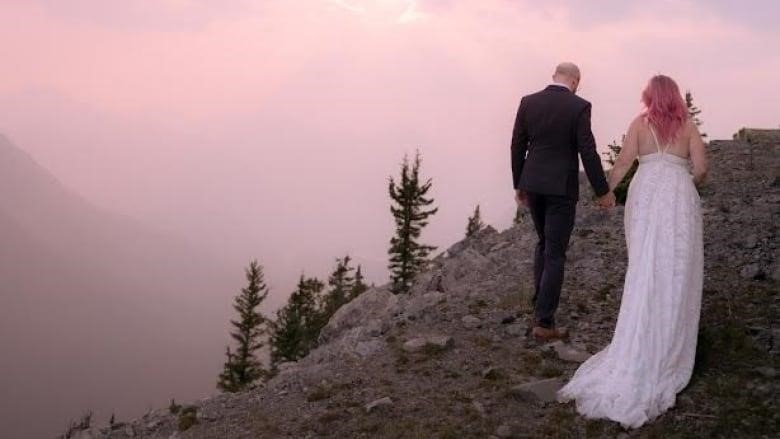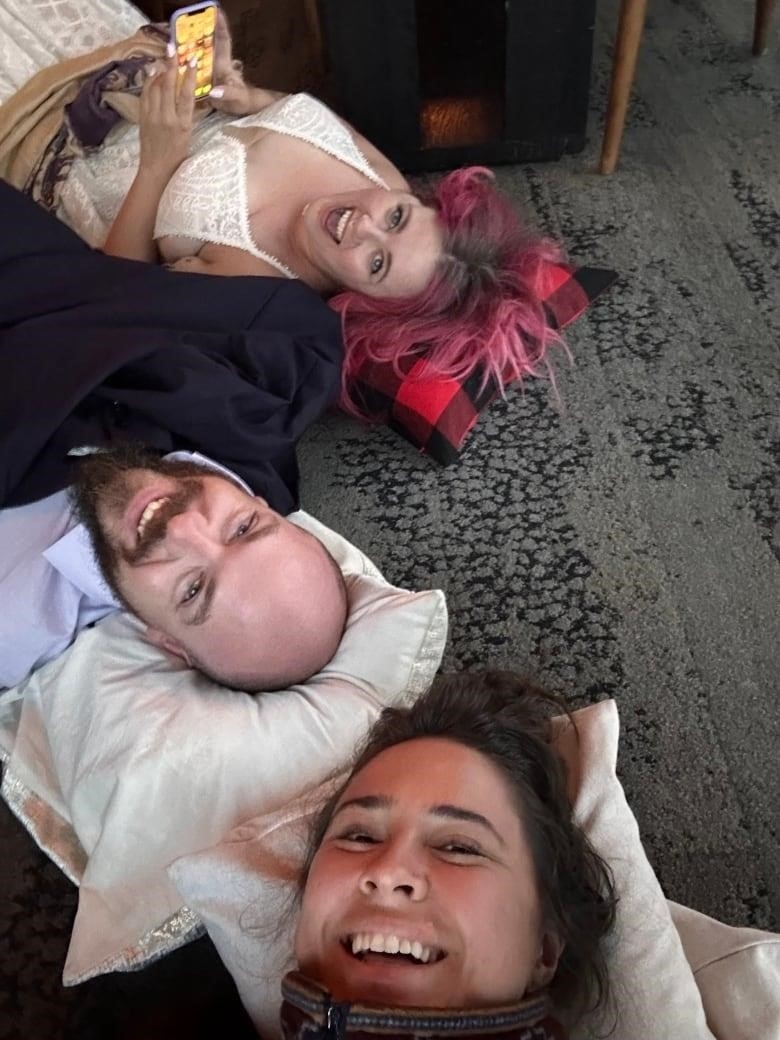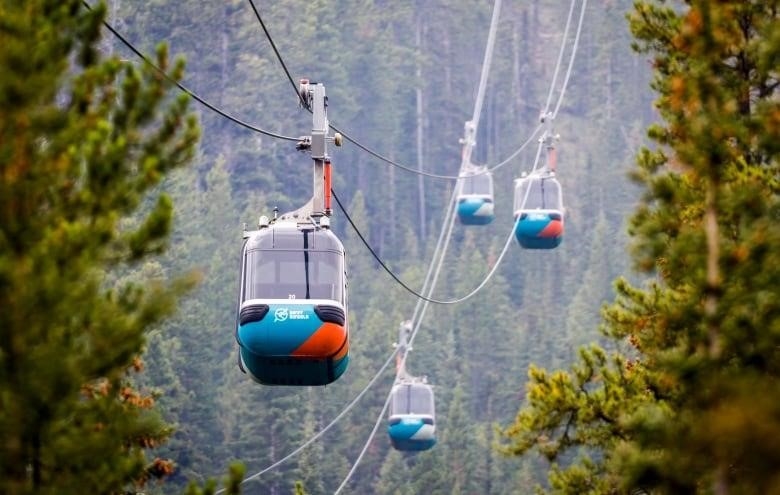
A popular tourist spot stopped working because the power went out
Jaclyn and Brennen McConnell planned their elopement in the Alberta Rockies a year ago, but they weren’t ready to sleep on the floor of a building on the top of a mountain on their wedding night.
The couple from Kelowna, B.C., got married on Monday and then took the Banff Gondola to the top of Sulphur Mountain so photographer Pala Kovacs could take wedding pictures there.
“We only planned to spend an hour up there. “Pala took the strangest pictures,” Jaclyn McConnell said in an interview on Wednesday.
“The power went out just as we were getting ready to leave. So, we took some more pictures, and then nothing happened for 13 hours, so we stayed there.”

A lightning storm had knocked out the power to a popular tourist spot in Banff National Park, so it wasn’t working.
McConnell and Kovacs both said it didn’t look like there was much of a plan.
“We waited around and they told us what they were doing at different times, but it was very clear that they didn’t have a backup plan,” Kovacs said. “But the people who worked up there were great.”
A spokeswoman for the company that runs the gondola, Pursuit, said that they do have strict plans in place for situations like this.
Tanya Otis said in an email, “But we will always look for ways to improve how we communicate with our guests.”
She said that the gondola has a backup generator that let the company safely bring guests down who were in the cabins when the power went out.
“According to the rules for passenger ropeways set by the Canadian Standards Association, backup emergency drive systems are only used to get people out of gondola cabins in the event of a breakdown,” she said. “It’s not for getting people down from the mountain.”
The company said that after the gondola broke down, several hundred guests had to be helped down from the top. Parks Canada said that its visitor safety team was involved and that all guests were brought down Tuesday.
Some of the guests hiked down the switchbacking 5-and-a-half-kilometer trail at night, while others waited until Tuesday morning.
People were told they could walk down around 2 a.m., but it would be at their own risk, McConnell said.
She said, “It had been storming, there was lightning everywhere, and it was dark.” “It’s completely dark, and bears are everywhere. Many of us didn’t feel safe walking down.”
She also said that they didn’t have the right shoes, so they spent the night in the building at the top.
“We slept on the floor,” McConnell explained. “My husband slept on the floor in his suit. I slept on the floor in my wedding dress.
“It felt like I was almost sleeping in an airport.”
Kovacs said that about 100 people, including children and older people, chose to ride down in a helicopter.
“I couldn’t hike down even if I wanted to,” she said. “I had a suitcase full of my camera gear, lighting, and other things, so we waited until the morning and were flown down by helicopter.
“They did it pretty well, we just had to wait until it was light out.”
Kovacs said it wasn’t as stressful as she thought it would be, but the kids and older people who got stuck had a hard time.
She said, “Because it’s a gondola, it’s the easiest and most convenient way for people to see the alpine.” So I felt bad for them because there weren’t any comfortable places for them to stay. They were hungry and they were cold.”
She said that on Tuesday, around 3 a.m., the staff opened a restaurant and made some food after it became clear that the remaining guests would be spending the night at the top.
Kovacs said there was a child who needed medicine and the first aid kit wasn’t fully stocked, but one of McConnell’s friends is a pediatric doctor and was able to help that family.
She said, “There were definitely some more stressed-out people who took it out on the staff.” “But most people seemed to understand that they couldn’t do anything about it.”
